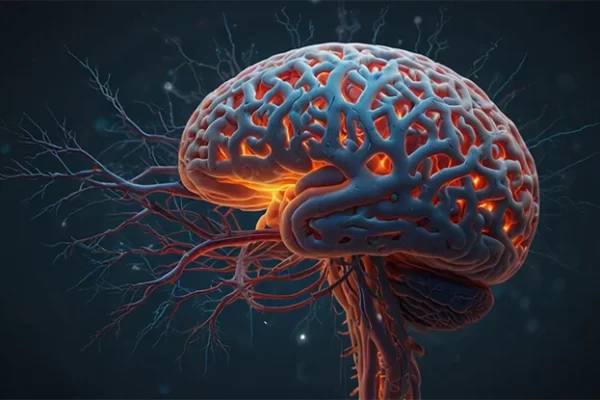Dialectical Behavior Therapy (DBT) is a form of psychotherapy developed by Dr. Marsha Linehan in the late 1980s. Although this therapy method was initially created to treat borderline personality disorder, especially in individuals prone to suicidal behavior, today it is effectively used to treat a wide range of other mental disorders.
A key feature of Dialectical Behavior Therapy is its dialectical approach, which integrates opposing concepts of acceptance and change. The focus here is on balancing the need to accept oneself as one is while simultaneously striving for change. The significance of DBT in modern psychotherapy is quite high, as this approach shows impressive results in treating a broad spectrum of disorders.
Dialectical Behavior Therapy effectively combines elements of cognitive-behavioral therapy with mindfulness and dialectical strategies, making it a versatile tool applicable in various clinical contexts. The particular value of DBT lies in its ability to help individuals suffering from severe emotional crises and behavioral problems where other methods might be less effective.
Dialectical Behavior Therapy includes four core components:
- Mindfulness – promotes the development of mindful presence in the present moment.
- Interpersonal Effectiveness – focuses on improving communication and interaction skills with others.
- Distress Tolerance – teaches methods of coping with stress and tolerating difficult emotional states.
- Emotion Regulation – helps better understand and manage one’s emotions.
Dialectical Behavior Therapy is particularly effective in working with individuals experiencing intense emotional swings, feelings of emptiness, fear of rejection, and instability in relationships, helping them lead healthier lives and enhancing their emotional resilience.

The History of Dialectical Behavior Therapy (DBT)
Dialectical Behavior Therapy (DBT) was developed by Dr. Marsha Linehan in the late 1980s, initially as a method for treating borderline personality disorder, especially in individuals with suicidal behavior. Linehan, who had personally experienced mental health issues in the past, found that traditional psychotherapy methods were ineffective for a certain group of patients with intense emotional fluctuations and unstable behavior.
Building on cognitive-behavioral therapy, Linehan introduced a dialectical component, emphasizing the balance between acceptance and striving for change. This approach was inspired by the philosophy of dialectics and the Buddhist practice of mindfulness. Dialectical Behavior Therapy combines elements of group and individual therapy, teaching patients skills that help them cope with emotional crises and improve interpersonal relationships.
Over time, DBT has demonstrated its effectiveness in treating other disorders, such as chronic depression, anxiety disorders, post-traumatic stress disorder, and eating disorders. A significant part of Dialectical Behavior Therapy is its work on enhancing stress tolerance and developing emotional regulation.
Today, DBT is recognized as one of the most effective methods in psychotherapy for treating complex emotional disorders and is actively used worldwide, continuously adapting and evolving in response to new scientific research and clinical experience.

Core Principles of DBT
Dialectical Behavior Therapy (DBT) is an innovative and dynamic approach to psychotherapy designed to address deeply rooted emotional problems. Its core principles are based on the synthesis of cognitive-behavioral methods and dialectical philosophy, enriched by the practice of mindfulness. The goal of DBT is not merely to eliminate symptoms but to help patients develop a deep understanding of themselves and their relationships with the world around them.
A distinctive feature of Dialectical Behavior Therapy is its unique approach to the problem of emotional imbalance, which combines both acceptance and the desire for change. This dialectic is at the core of all therapy components and helps clients learn to balance extremes in their thoughts, feelings, and behaviors. A key element of DBT is mindfulness, which teaches awareness of the present moment without judgment and an open acceptance of one’s internal experience.
At the heart of DBT is the idea that understanding and acknowledging the current state of affairs are prerequisites for any significant change. The therapy teaches that many aspects of a person’s life, including their thoughts, feelings, and behaviors, are dialectical — containing opposing sides that can coexist and interact. This understanding helps clients gain deeper self-awareness and develop the skills necessary to effectively manage complex emotional states.
Dialectics as a Fundamental Principle of DBT
Dialectics, serving as a fundamental principle in Dialectical Behavior Therapy (DBT), represents a philosophical method of thinking that emphasizes the contradictory and changing nature of reality. In the context of DBT, dialectics is used to help patients accept and simultaneously strive for change — a key concept at the core of this therapeutic model.
The principle of dialectics in DBT is to help clients see and reconcile contradictory aspects of their experience, such as the need to acknowledge their feelings and, at the same time, strive to change them. This approach is based on the understanding that opposites not only coexist but are in constant interaction, leading to movement and change.
The dialectical approach in DBT helps individuals move away from black-and-white thinking, which often leads to emotional difficulties and dysfunctional behavior. Instead, clients learn to accept the complexity and multifaceted nature of their experience, leading to a more flexible and adaptive way of perceiving and responding to life circumstances. This, in turn, fosters harmony in personal life and helps achieve lasting changes.
The Interrelation Between Acceptance and Change
The interrelation between acceptance and change is a central theme in Dialectical Behavior Therapy and represents one of its key principles. This balance between accepting what is in the moment and simultaneously striving for change lies at the heart of the therapeutic process.
In DBT, acceptance means acknowledging the reality of one’s current state, including emotions, thoughts, and circumstances, without judgment or resistance. It does not imply passive resignation to a situation but rather the recognition and acknowledgment of what is happening. Acceptance helps reduce the internal conflict often associated with denial or fighting against reality.
Change, on the other hand, involves active steps toward improving one’s quality of life and transforming destructive thoughts and behaviors. In DBT, change involves developing and applying new skills that help clients respond more appropriately to challenging situations, manage their emotions, and enhance interpersonal effectiveness.
The interrelation between acceptance and change is based on the understanding that to change something in one’s life, it must first be accepted as it is. Without accepting the current state of affairs, any attempts at change become ineffective or may lead to additional stress and frustration. Acceptance provides a stable foundation for subsequent change, allowing a person to move forward with greater clarity and purpose.
Thus, in DBT, acceptance and change are not opposed but rather work together, creating a dynamic process of personal growth and self-development.
The Concept of Metacognition in DBT
The concept of metacognition in Dialectical Behavior Therapy plays an important role in helping clients develop a deeper understanding of their thoughts and emotions. Metacognition, or awareness of one’s thinking, refers to a person’s ability to observe and analyze their cognitive processes. In the context of DBT, this includes awareness of how thoughts, beliefs, and internal dialogues influence emotional states and behavior.
In Dialectical Behavior Therapy, metacognition is used to help clients step back and look at their thoughts and feelings from above. This refers to the ability to recognize that thoughts are just brain processes, not objective reality. Thus, clients learn not to automatically identify with their thoughts or feelings but to observe and analyze them.
The development of metacognition in DBT helps reduce emotional reactions triggered by dysfunctional thinking patterns. Clients learn to recognize their distorted or ineffective thoughts and gradually develop the skills to respond to them more consciously and constructively. This may include techniques such as reappraisal or reframing thoughts, allowing them to change their perception and attitude toward situations.
Metacognition in DBT is also closely related to the practice of mindfulness, which teaches focusing on the present moment and accepting one’s thoughts and feelings as they are. This contributes to developing deeper self-understanding and self-acceptance, which is a key aspect of effective therapy.
Dialectical Behavior Therapy: Key Methods and Techniques
Dialectical Behavior Therapy (DBT) includes a range of unique methods and techniques aimed at helping individuals manage their emotions, behaviors, and interpersonal relationships. These methods are based on principles of dialectics, mindfulness, and cognitive-behavioral therapy, providing a comprehensive approach to addressing emotional and behavioral issues. The primary goal of these techniques is to equip clients with tools to manage complex emotions more effectively and enhance their quality of life.
DBT methods and techniques are specifically designed to help clients develop skills in four key areas: mindfulness, interpersonal effectiveness, distress tolerance, and emotion regulation. Each of these areas targets specific aspects of mental health and behavioral responses, providing comprehensive support and personal development.
- Mindfulness focuses on developing the ability to be aware of the present moment without judgment and automatic reactions.
- Interpersonal effectiveness focuses on improving communication skills and the ability to set healthy boundaries in relationships.
- Distress tolerance includes methods and strategies for coping with emotional pressure and stressful situations.
- Emotion regulation helps in better understanding and managing emotions, promoting healthier responses to life’s challenges.
All of these methods and techniques are closely intertwined and complement each other, creating a powerful support system for individuals seeking personal growth and emotional well-being.
Mindfulness
Mindfulness is one of the key components of Dialectical Behavior Therapy and plays an important role in the therapeutic process. This component focuses on developing the ability to be fully present in the current moment, aware of one’s thoughts, feelings, and sensations without judgment and automatic reactions.
Mindfulness helps develop a deep understanding of one’s inner experience, which is the first step in managing emotions and changing behavior. This practice teaches individuals to recognize their thoughts and feelings as temporary and changeable states rather than absolute realities, which allows them to reduce the impact of negative thoughts and emotional reactions, preventing patterned and often destructive behaviors.
Mindfulness in DBT includes various exercises and practices, such as meditation, breathing exercises, and awareness of physical sensations. These practices are aimed at enhancing the ability to focus on the present moment, developing self-awareness, and perceiving internal processes without evaluation or criticism.
Mindfulness practice within Dialectical Behavior Therapy also helps build emotional resilience. Being present and accepting one’s current experience helps in coping with distress and emotional challenges, thus contributing to overall psychological well-being.
Interpersonal Effectiveness
Interpersonal effectiveness refers to a set of skills aimed at improving an individual’s ability to interact with others. These skills help build healthier and more harmonious relationships, improve communication, set and maintain personal boundaries, and effectively resolve conflicts.
The key aspects of interpersonal effectiveness in DBT include:
- Expressing needs and desires – teaching clients to clearly and confidently express their thoughts and feelings while respecting the rights and feelings of others.
- Assertiveness – developing the ability to stand up for one’s rights and interests in ways that do not violate the rights of others.
- Establishing and maintaining boundaries – teaching clients to define and express their personal boundaries in relationships, which helps improve respect and understanding between people.
- Conflict management – developing strategies for effectively resolving interpersonal conflicts, reducing tension, and finding compromises.
- Social skills – improving overall social competence, including active listening skills, empathy, and appropriate responses to social cues.
Interpersonal effectiveness in Dialectical Behavior Therapy helps clients better understand interpersonal dynamics and learn to respond to them in healthier and more constructive ways. This is crucial for those who struggle with relationship difficulties due to emotional or behavioral issues.
Distress Tolerance
Distress tolerance is a key skill that helps clients cope with difficult, stressful, or painful emotional states without resorting to destructive behaviors. This skill is aimed at enduring and tolerating negative emotions while maintaining control over reactions.
In Dialectical Behavior Therapy, distress tolerance does not mean suppressing or ignoring emotional discomfort, but rather learning how to experience difficult moments more effectively and with less suffering.
Distress tolerance techniques in DBT include:
- Self-soothing through the five senses – using sight, sound, touch, taste, and smell for calming and relaxation.
- Breathing exercises and relaxation – applying breathing techniques and relaxation exercises to reduce physiological tension.
- Shifting focus from negative thoughts or sensations to an external activity or task.
- Radical acceptance – acknowledging that some situations cannot be immediately changed and focusing on surviving them without escalating the situation.
- Mental visualizations – creating calming or distracting mental images.
Distress tolerance in DBT is particularly important for individuals prone to intense emotional experiences or impulsive behaviors. Developing this skill helps reduce the likelihood of destructive behavior in response to stress and promotes healthier coping strategies.
Emotion Regulation
Emotion regulation is one of the central components of Dialectical Behavior Therapy, aimed at helping clients manage and alter intense emotional reactions. The goal of emotion regulation is not to suppress or avoid emotions but to develop skills that allow individuals to experience emotions more balancedly and respond appropriately to emotional situations.
The key aspects of emotion regulation in DBT include:
- Emotion awareness – understanding one’s emotions, their sources, and their influence on thoughts and behavior.
- Changing emotional responses – developing strategies to alter or mitigate negative emotional responses.
- Reducing emotional vulnerability – working on strengthening emotional health through physical care, balanced nutrition, sufficient sleep, and physical exercise.
- Mindfulness techniques – applying mindfulness practices to better understand and accept current emotional states without judgment or evaluation.
- Opposite action – altering emotional responses by taking deliberate actions opposite to current emotional impulses.
Emotion regulation in DBT helps clients develop greater resilience to emotional challenges, improving overall well-being and quality of life. This not only enhances the ability to effectively cope with current emotional difficulties but also teaches skills necessary for preventing future emotional crises.

Application of DBT in the Treatment of Various Disorders
Dialectical behavior therapy (DBT), originally developed for treating borderline personality disorder (BPD), has proven effective over time for a wide range of mental health disorders. The uniqueness of DBT lies in its flexibility and adaptability, allowing it to be applied to various clinical cases. It is important to note that DBT not only reduces symptoms but also strives to improve patients’ quality of life by teaching them the skills necessary for effective emotion regulation, behavior management, and interpersonal relationships.
Based on principles of mindfulness, distress tolerance, emotion regulation, and interpersonal effectiveness, dialectical behavior therapy has been found effective not only in treating borderline personality disorder but also in depression, anxiety disorders, eating disorders, and post-traumatic stress disorder (PTSD). DBT is especially valuable in cases where patients struggle to manage intense emotions or exhibit impulsive and self-destructive behavior.
The application of DBT in treating various disorders highlights the importance of an individualized approach in psychotherapy, which adapts to the specific needs and circumstances of each client, leading to significant improvements in their mental health and overall well-being.
DBT in the Treatment of Borderline Personality Disorder
Borderline personality disorder is characterized by profound emotional instability, fear of rejection and abandonment, frequent and intense mood swings, impulsivity, and interpersonal relationship difficulties.
Dialectical behavior therapy is ideally suited for treating borderline personality disorder as it helps reduce the frequency and intensity of emotional crises, improves the ability for self-regulation and self-control, and fosters the development of healthier interpersonal relationships.
The therapy also focuses on reducing self-destructive behaviors, such as suicidal actions or self-harm, which are often present in individuals with borderline personality disorder.
The use of DBT in treating this disorder requires a personalized approach and close collaboration with a psychologist to ensure ongoing support and adaptation of treatment strategies according to the client’s needs.
Application of DBT in Treating Depression and Anxiety Disorders
The application of dialectical behavior therapy in treating depression and anxiety disorders has shown significant effectiveness. DBT is useful in these contexts due to its emphasis on developing skills for emotion management, mindfulness, stress tolerance, and interpersonal interactions.
In the context of depression, DBT helps patients:
- Develop coping mechanisms for negative thoughts and feelings, which is crucial in combating depressive states.
- Increase motivation and activity, as apathy and loss of interest in life are key symptoms of depression.
- Cultivate mindfulness skills, which help focus on the present moment and reduce worries about the past or future.
- Improve interpersonal relationships, which is important considering that social isolation and relationship problems often worsen depressive states.
In the case of anxiety disorders, DBT focuses on:
- Teaching distress tolerance skills, helping patients manage anxiety without resorting to avoidance or compulsive behaviors.
- Developing emotion regulation strategies, which are important for managing intense anxiety reactions.
- Strengthening mindfulness, enabling better awareness and management of anxious thoughts.
- Enhancing social skills and self-confidence, as anxiety disorders are often linked to difficulties in communication and expressing one’s needs.
Thus, dialectical behavior therapy provides substantial support in treating depression and anxiety disorders, offering patients the skills and tools for more effective emotional management and improving overall quality of life.
Effectiveness of DBT in Working with PTSD Patients
The effectiveness of DBT in working with patients suffering from post-traumatic stress disorder (PTSD) is also supported by clinical practice and research. Although dialectical behavior therapy was not originally developed specifically for PTSD treatment, its methods have proven useful in alleviating symptoms in patients with this disorder.
Important aspects of DBT application for PTSD include:
- Emotion regulation. PTSD is often accompanied by intense and hard-to-control emotions. DBT helps patients develop skills to manage these emotions.
- Distress tolerance. Patients with PTSD often experience high levels of stress and anxiety. Distress tolerance skills developed in DBT help cope with these states.
- Mindfulness. Mindfulness practice helps PTSD patients focus on the present moment, reducing the frequency and intensity of flashbacks and triggers.
- Interpersonal effectiveness. PTSD can severely affect interpersonal relationships. DBT helps improve communication skills and fosters the building of healthy relationships.
- Working with trauma. Although DBT is not traditionally considered a method for trauma treatment, it can be adapted to address traumatic memories and feelings.
The application of DBT in treating PTSD is particularly effective when therapeutic work includes elements specifically aimed at processing psychological trauma and its consequences. This integrative approach allows for a deeper understanding of traumatic events and the development of skills for better managing post-traumatic symptoms and improving overall well-being.
Other Applications of DBT
Dialectical behavior therapy has found wide application in the treatment of many other mental disorders and issues. Below are some of the areas where DBT is successfully applied:
- Eating disorders. DBT is effective in treating bulimia and eating disorders, especially when they are accompanied by emotional instability and impulsivity.
- Addictions and harmful habits. DBT helps in working with chemical addictions (e.g., alcoholism or drug addiction) and some forms of behavioral addictions.
- Chronic pain syndromes. DBT is used to help patients manage chronic pain and improve their quality of life when dealing with chronic physical conditions.
- Obsessive-compulsive disorder (OCD). While other methods are more commonly used for treating OCD, DBT can be helpful in cases where OCD is accompanied by significant emotional distress or instability.
- Aggressive and impulsive behavior. DBT helps develop self-control and effective management of impulsive reactions.
- Mood disorders, including bipolar disorder. DBT is applied to improve mood regulation and manage crisis situations.
- Personality disorders. In addition to borderline personality disorder, DBT can be adapted for working with other types of personality disorders.
- Anxiety and depression. DBT assists in managing emotions and developing strategies to combat these conditions.
This list is not exhaustive, as the flexibility of dialectical behavior therapy allows it to be adapted to a wide range of psychological problems and disorders. DBT approaches and techniques can be individualized to meet the specific needs of each client, making this therapy a multifunctional tool in the field of mental health.

Examples of Successful Applications of Dialectical Behavior Therapy
- Mikhail, 35, with chronic depression. Mikhail sought help for long-term depression, which was negatively affecting his work and personal relationships. During DBT, he focused on developing mindfulness and emotion regulation skills. After several months of therapy, Mikhail reported a significant reduction in depressive symptoms and an overall improvement in well-being.
- Elena, 40, with borderline personality disorder. Elena struggled with extreme mood swings and difficulties in interpersonal relationships. Through DBT, she worked on improving interpersonal effectiveness and distress tolerance. After completing therapy, Elena noted a reduction in emotional volatility and better relationships with those around her.
- Alexei, 30, with adjustment disorder. Alexei experienced significant stress and anxiety after a series of life changes, including a job change and divorce. DBT helped him develop stress management and mindfulness skills, which contributed to his adaptation to new circumstances and a reduction in anxiety levels.
- Svetlana, 25, with post-traumatic stress disorder. After experiencing trauma, Svetlana suffered from flashbacks and severe anxiety. During DBT, she learned distress tolerance and mindfulness techniques, which helped her manage post-traumatic symptoms and regain control over her life.
- Igor, 50, with anger management issues. Igor sought help for explosive reactions and frequent family conflicts. Dialectical behavior therapy helped him develop emotion regulation and assertive communication skills. Upon completing therapy, he reported learning to control his anger, which improved his family relationships.
These examples demonstrate how DBT can be applied to help clients with various mental health disorders.

Pros and Cons of DBT
Dialectical behavior therapy has both advantages and disadvantages, which are important to consider when choosing a treatment approach.
Pros of DBT:
- Effectiveness in treating diverse disorders. Originally developed for borderline personality disorder, DBT has also shown effectiveness in treating depression, anxiety disorders, PTSD, and other conditions.
- Emotion regulation skills. DBT teaches patients effective emotion regulation skills, helping to reduce emotional reactivity and increase resilience to stress.
- Development of mindfulness. Mindfulness practice helps patients focus on the present moment and reduces anxiety caused by thoughts about the past or future.
- Improvement of interpersonal skills. DBT helps improve communication skills and establish healthier interpersonal boundaries.
- Structured approach. DBT provides a clear treatment structure, which is especially helpful for patients who need specific directions and exercises.
Cons of DBT:
- Requires significant effort and commitment. DBT requires active participation and dedication to the process, which can be challenging for some patients.
- Time and financial costs. A course of DBT can be long and require regular sessions, which may be expensive.
- Emotional intensity. Working through deep emotional issues in DBT can be emotionally challenging.
- Not suitable for everyone. While DBT is effective for many disorders, it may not be suitable for all patients, especially those who struggle with group sessions or structured approaches.
- Experienced therapist needed. The effectiveness of DBT largely depends on the qualifications and experience of the therapist, making the selection of the right professional critically important.
Overall, dialectical behavior therapy is a powerful and effective therapeutic tool, but like any approach, it has its limitations and is not suitable for everyone. Therefore, it’s important to carefully weigh the pros and cons before choosing this method of treatment.

Integration of DBT with Other Therapeutic Approaches
The integration of dialectical behavior therapy with other therapeutic approaches is an important trend in modern psychotherapy. This is because combining different methods enhances the therapeutic effect and offers deeper and more comprehensive treatment. Below are examples of such integration:
- Cognitive-behavioral therapy (CBT) and DBT. Combining DBT with CBT can be very beneficial, as CBT focuses on changing thought processes and behaviors, while DBT emphasizes emotion regulation and mindfulness. This combination can be effective in treating mood disorders and anxiety.
- Schema therapy and DBT. Schema therapy focuses on identifying and changing long-term behavioral and cognitive patterns. Integration with DBT can enhance work on emotion regulation and interpersonal skills.
- Psychoanalytic approaches and DBT. Combining DBT with psychoanalytic approaches helps to better understand the roots of emotional problems and improve clients’ self-awareness.
- Motivational interviewing and DBT. Integrating motivational interviewing with DBT fosters increased motivation for change and acceptance of treatment, especially in work with addictions and problematic behaviors.
- Mindfulness-based therapies and DBT. Given that mindfulness is already an important part of DBT, further incorporation of mindfulness-based approaches can enhance work on present-moment awareness.
The integration of various approaches requires the therapist to have a deep knowledge of each individual method, as well as ways to effectively combine them. This allows for the creation of a more individualized treatment plan tailored to the unique needs of each client.

Prospects and Future of Dialectical Behavior Therapy
The prospects for DBT in psychotherapy look promising, given its growing recognition and application in the treatment of various psychological disorders. Here are a few key directions that may shape its future:
- Expanding the scope of application. Dialectical behavior therapy continues to adapt for the treatment of a wide range of disorders, including anxiety disorders, depression, eating disorders, and even chronic illnesses. It is expected that this trend will continue in the future.
- Integration with other therapeutic approaches. DBT can be effectively integrated with other forms of psychotherapy, allowing for more comprehensive and individualized treatment plans.
- Research and development. Ongoing research to assess the effectiveness of DBT in various clinical contexts, including long-term studies and work with diverse populations, will contribute to the improvement and expansion of this approach.
- Online psychotherapy. The inclusion of digital technologies, such as mobile apps and online platforms for DBT, may improve the accessibility and convenience of therapy for a larger number of people, especially in situations with limited access to traditional forms of treatment.
- Training and dissemination. Increasing the number of qualified specialists and spreading knowledge about DBT among mental health professionals will help improve the quality and accessibility of this treatment method.
Dialectical behavior therapy continues to evolve and adapt, remaining an important tool in the arsenal of modern psychotherapy. Given its proven effectiveness and flexibility, it is likely to play a significant role in the treatment of mental disorders in the future.

Conclusion
Dialectical behavior therapy (DBT) is a unique approach to psychotherapy that combines elements of cognitive-behavioral therapy with the philosophical principles of dialectics and mindfulness practices. This approach is aimed at helping people with intense emotional reactions and difficulties in interpersonal relationships, which are often seen in borderline personality disorder, though it is also effective for a wide range of other psychological issues.
The main idea of DBT is the balance between acceptance and the pursuit of change. Therapy helps clients acknowledge and accept their current thoughts and feelings while working to change undesirable or destructive behavioral patterns. Mindfulness and present-moment awareness are key components of DBT, allowing clients to better understand themselves and their interactions with the world around them.
Through therapy, clients learn effective emotional regulation, stress tolerance, improved interpersonal skills, and self-confidence. These skills help them cope with life’s challenges in a more adaptive and productive manner. DBT often includes both individual and group sessions, providing support and education in a dynamic and interactive environment.
This therapeutic approach demonstrates high efficacy in treating various mental health disorders and problems, offering tools and strategies to improve psychological well-being and quality of life.

References and Recommended Resources
Here are a few key books on dialectical behavior therapy from leading authors in this field:
- “Cognitive-Behavioral Treatment of Borderline Personality Disorder” by Marsha M. Linehan. This foundational book details the principles and methods of DBT, first introduced for the treatment of borderline personality disorder.
- “DBT Skills Training Manual” by Marsha M. Linehan. A practical guide to DBT skills training, including instructional materials and exercises.
- “The Dialectical Behavior Therapy Skills Workbook” by Matthew McKay and Jeffrey C. Wood. A practical guide for individuals seeking to improve their emotional and behavioral skills using DBT.
- “Doing Dialectical Behavior Therapy: A Practical Guide” by Kelly Koerner and Marsha M. Linehan. This book describes specific strategies and techniques for effectively applying DBT in clinical practice.
In addition to the thematic literature, numerous resources and educational materials for studying and practicing dialectical behavior therapy are available online. Here are a few of them:
- The website DialecticalBehaviorTherapy.com offers educational videos and other helpful materials on DBT. You can find information here about how dialectical behavior therapy helps treat various conditions, including anxiety disorders, depression, eating disorders, and more.
- The website DBT.tools provides various DBT resources and tools, including educational and practical materials that therapists can print and give to clients for homework.
- On the website DBTSelfHelp.com you can find information about mindfulness skills, distress tolerance, emotional regulation, and interpersonal effectiveness.
- The website Therapist Aid offers various DBT programs and materials that can be useful for both therapists and clients.
- The website DBTBites.com offers free modular DBT training, including videos and materials for self-study.




